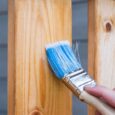Did you know that your washing machines can get dirty quite quickly? It may even be filled with hidden molds (moulds) that you are not aware of. But how can you tell? It may be a sign if you smell a wet sock or rotten egg in your laundry room or clothes.
Molds typically form on the rubber gasket or silicon seal of your washers. It often results from failing to clean it regularly or improper usage. To keep your clothes and washing machines smelling fresh and clean, here are simple but helpful tips:
Open the Lid if not in Use
Molds generally grow and thrive in the dark, damp areas. After unloading your clothes, the inside of your washing machines can be a perfect environment for molds to grow and thrive if left uncleaned. It helps if you leave the door open to allow ventilation inside the washer.
Remove Wet Clothes Immediately
Avoid loading your clothes in your washer if you plan to go outside for a while or sleep and cannot attend to it when the timer goes off. This does not only prevent molds from growing but also helps keep your clothes from mildewing.
Ensure to Wipe Your Washing Machine Every After Use
Every time you’re finished using your washing machine, make sure to wipe it down from top to bottom until the last part that’s damp. Pay attention to the drum, lid, rubber gaskets, and detergent dispenser (if your machine has this feature). Wash the gaskets or seal around the door regularly and keep them dry.
The gasket seals moisture that helps mold grow and functions to ensure water doesn’t leak out around the door. In addition, you have to remove crumpled papers, pet hair, or any dirt in your washing machine immediately.
In Case of Mold Presence, Follow These Steps to Remove Them
- For a safe mould removal process, start by putting on gloves and find an old towel you don’t use.
- Make a solution from materials found in your home. You can mix bleach and hot water or vinegar and hot water. Never attempt to mix vinegar and bleach because this can create a chlorine gas that may pose a hazard.
- Get the towel and dip it in the solution and use it to scrub away any visible mold. Focus on the gaskets and detergent dispenser. Dry them.
- With the hottest setting of your washer, run a wash cycle with a cup of vinegar or bleach, but not both. For vinegar, pour it in the detergent slot and in the compartment designated for bleach if you’re using bleach. You may also use your machine’s self-clean cycle if it has this function.
- Using another old, dry towel, wipe away all moisture in any part of your washing machine.
- Leave the door open to let air circulation dry out parts you may have missed. This should stop mold growth, especially if you do this on a monthly basis.
Clean Your Bathroom and Other Parts of the House
Molds may be coming from the other parts of your house, like your bathroom, kitchen, etc. Like most fungi, they reproduce and transfer from one location to another by releasing spores that can spread through water, air, and animals. Make sure to clean the other parts of your home, especially after water or fire damage.
If it takes a large part, you may need the help of professionals, such as PuroClean.ca.





